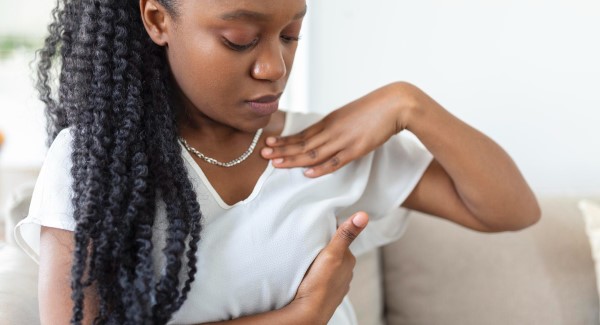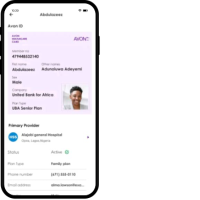
The best and most thorough breast self-exam you can perform is a multistep process, involving more than just the breasts themselves. Here’s how:
Step 1: Start by looking for differences between your breasts
Good breast self-exams should be concerned with both the look and feel of breasts. Stand or sit in front of a mirror and look out for
- Visible lumps
- Unusual differences between both breasts
- Dimpling or indentations in the breast tissue
- Changes to the skin or nipples that appear abnormal
- Changes to your nipples, e.g. a nipple that is newly inverted or pulling in
Step 2: Put your hands on your hips, pull your elbows forward
Look for the same changes mentioned in Step 1, this time with your hands resting on your hips while squeezing your elbows forward. This might bring out lumps that might not appear otherwise.
Next, lift your arms above your head to see if there’s any puckering or dimpling of the skin when you elevate them. When you raise your arms, the mass, if there is one, stays there and the skin pulls in.
Step 3: Use 3 fingers when examining your breasts
Lie down, with a pillow propping up your head and your arm resting behind it. With the opposite hand, take the first three fingers — index, middle and ring fingers — and use them to press down around the breast and surrounding area using circular motions. Using three fingers, rather than just one, keeps you from mistaking normal breast tissue for lumps.
Suggested Read: Should I avoid underwire bras? 7 Breast Cancer Myths and Facts
Step 4: Examine the areas surrounding the breast
After examining your breasts, it is important to perform a check of the areas around them. Continue to use circular motions and increasing pressure as you move from the collarbone to the sternum (middle of both breasts) and down below the breast.
From the lower part of the breast, travel up to the area under your arm to look for any swelling in the lymph nodes. What you’re looking for is something that stands out — something that feels like a pea, or a marble or a walnut. Something that definitely feels different than the surrounding breast tissue.”
Step 5: Perform the test at the same time each month
Be sure to do the breast self-examination at the same time every month. If you are still menstruating, do the exam about seven to 10 days after your menstrual cycle, since at that time there will likely be fewer cycle-related changes in the breast tissue.
The most important thing about a breast self-examination is to know your breasts. Many women detect breast cancers or breast lumps themselves and that can be the beginning of an important conversation with your doctor.
Don’t want to forget? Bookmark this page or download the image below:




